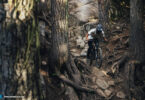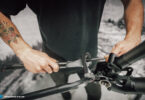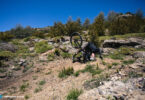Probably one of the most common maintenance procedures on bikes is repairing a buckled or slightly out of shape wheel. From a ‘get you home’ ghetto fix to truing back to its original shape, this skill is often seen as rocket science or just plain black magic, but it can be simpler than you think.
How does an MTB wheel work
Before we repair our wheel, first we need to understand how it works. Your rim (whether carbon or alloy) usually comes with around 24-64 spoke holes dependent on type. Spokes can be straight pull (no bend at the end) or normal hooked spokes, but all work to attach the rim to the hub in a similar way. However the spokes are laced, half will be fixed to the left side of the hub, pulling the rim left and the other half on the right of the hub pulling the rim over to the right; with equal spacing around the rim. These left and right pulling spokes are opposing, so if you were to run your hand around the spokes the direction of the pull of the spokes would go left, right, left, right, etc. Where the spoke joins the rim there will be a nipple, most are the standard square type which your ordinary spoke wrench will fit, but some brands use unique ones, like that of the Mavics or even Enve (Enve spokes need to be tightened from the inside of the rim with their own special tool).
Once you have removed your tyre (correct procedure here) to carry out a workshop style truing you will need
- Wheel jig (optional but very useful)
- Spoke key How does an MTB wheel work
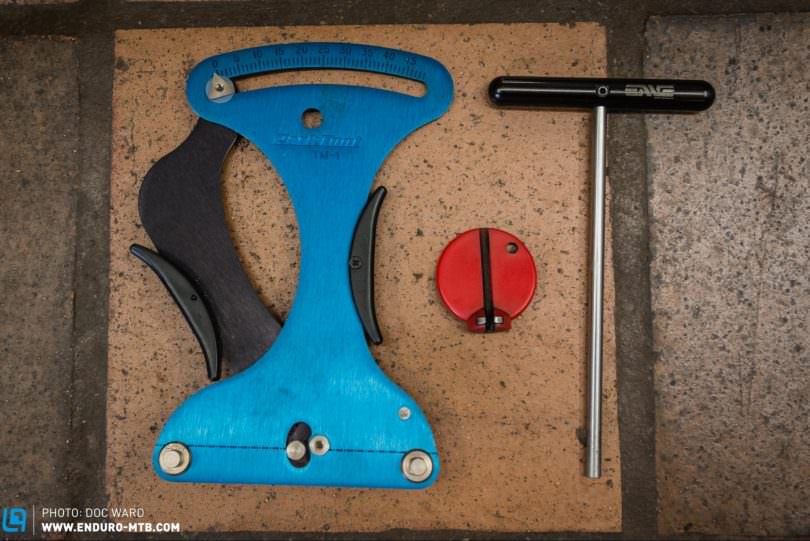

How to find the buckle in your MTB wheel
A simple way to test the straightness of your wheel is to hold your finger against either your swingarm or forks, nearly touching the edge of your rim (caution – do not put your finger in the spokes). Spin the wheel slowly and check out how much the gap between the end of your finger and the rim alters over each revolution. A proper wheel jig makes this job a lot easier.
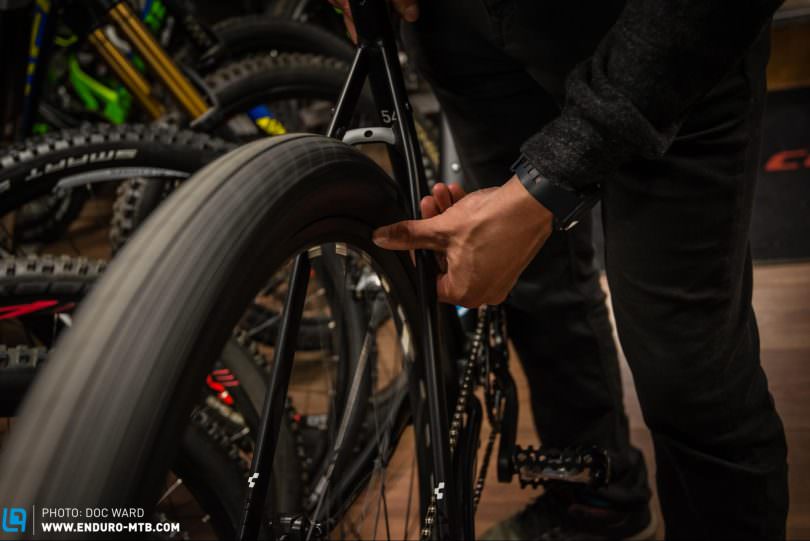
How To Straighten A Wheel
Small imperfections can be completed with the tyre on, but for proper repairs we suggest removing the tyre. Place the wheel in the wheel jig and spin the wheel to find out the position of the buckle. To tighten the spokes, when looking downwards at a spoke from the hub you should turn the spoke nipple clockwise to tighten or counterclockwise to loosen. If the buckle is pulling the rim to the left, you need to tighten the spokes going to right hand side of the hub, or vice versa. When tightening the affected area’s spokes, don’t just focus on the spoke in the middle of the buckle, tension the spokes which pull the rim in the same direction (left or right) next to the affected area too (at least one spoke each side). tighten all spokes a quarter of a turn each time, and after each adjustment spin the wheel slowly to check progress.
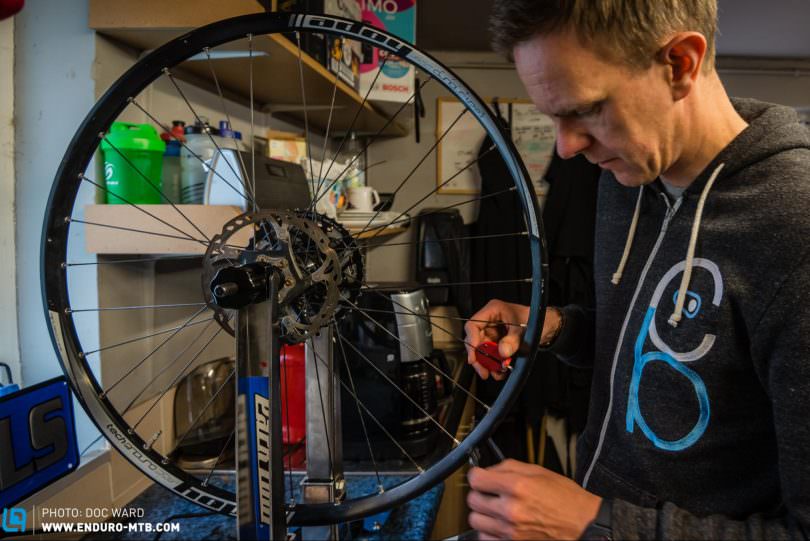
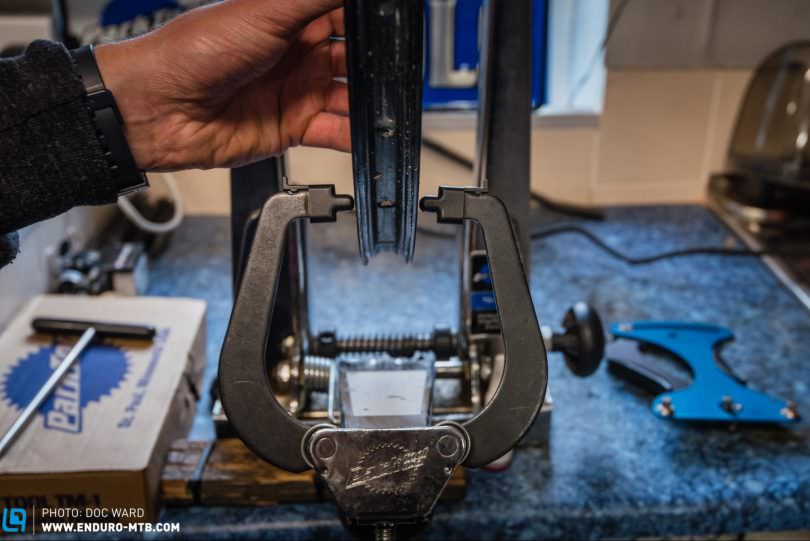
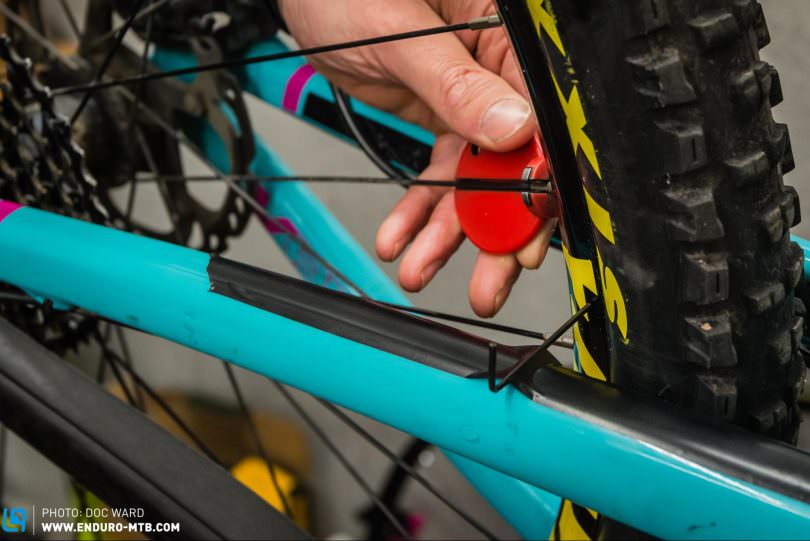
Conclusion To Straightening A Wheel
The key things to remember truing a modern day rim are that you can only remove small buckles completely, real big hits that have ‘banana’d’ your rim will result in a rim change. However, small repairs can be made easily so give it a try, practice makes perfect and after a few tries you will become a wheel master.
Did you enjoy this article? If so, we would be stoked if you decide to support us with a monthly contribution. By becoming a supporter of ENDURO, you will help secure a sustainable future for high-quality mountain bike journalism. Click here to learn more.
Words: Photos: Doc Ward



